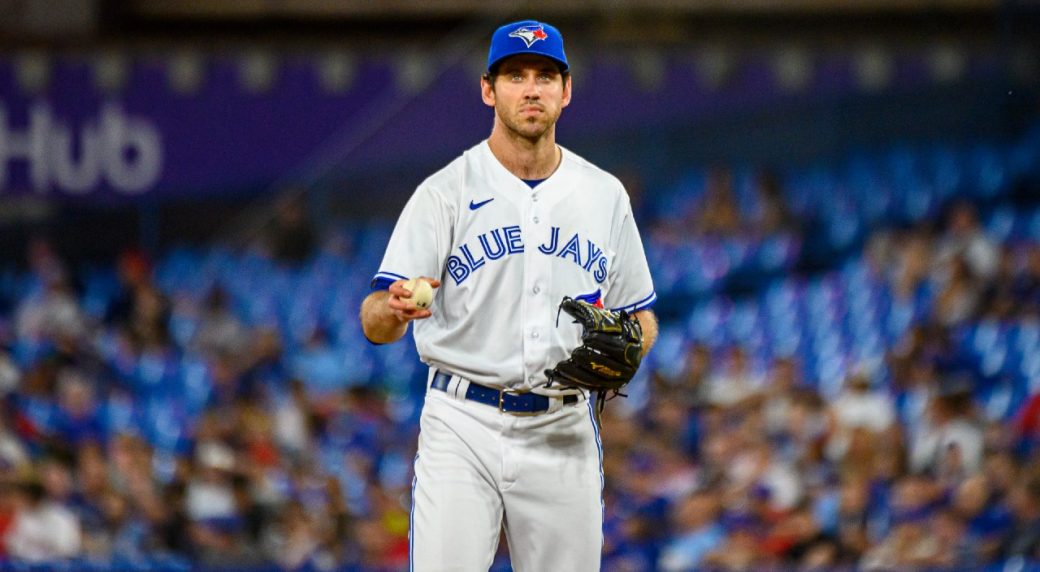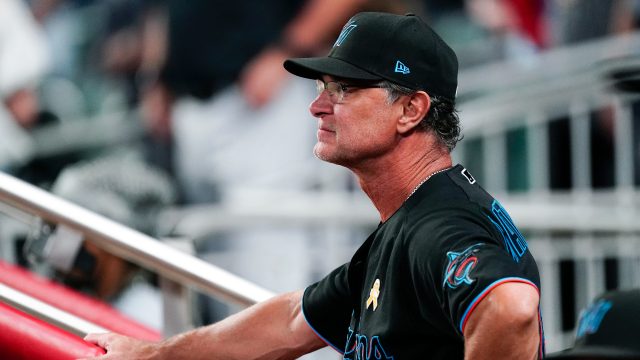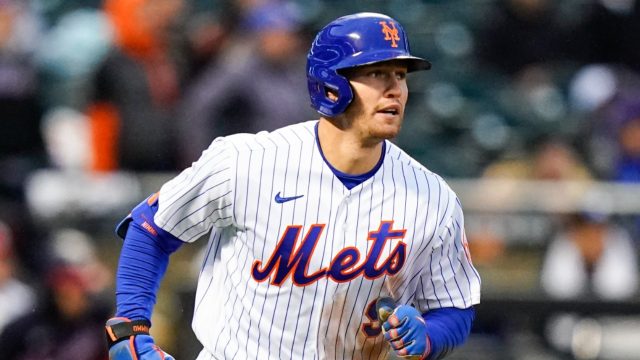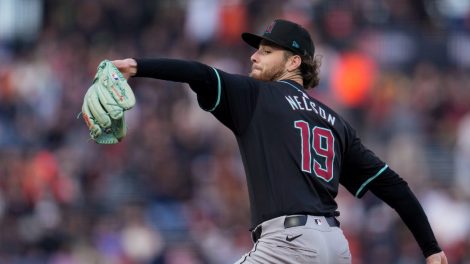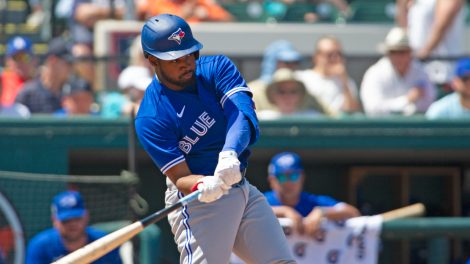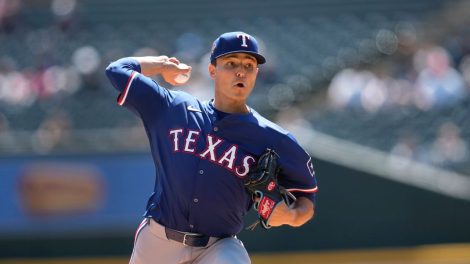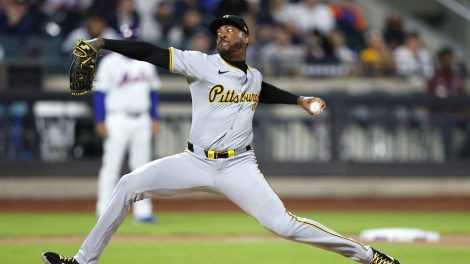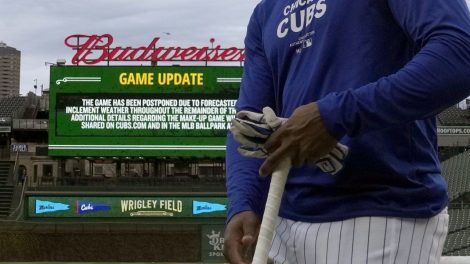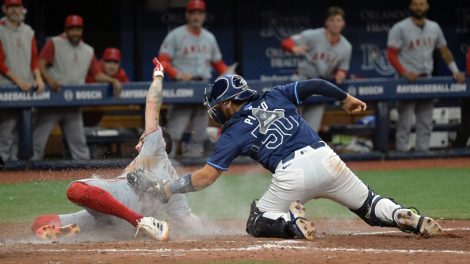Hope you didn’t get used to last off-season’s concentrated rush of MLB transactional activity around the league’s lockout of its players. Because one year later we’ve returned to the norm — a long, deliberate winter crawl with signings and trades arriving intermittently like drips from a leaky faucet.
Like most clubs, the Toronto Blue Jays still have plenty of work to do prior to opening day 2023. They need a mid-rotation starter, a left-handed hitting outfielder and pitching depth in general. The one roster need they’ve addressed so far is the back end of their bullpen with the acquisition of Erik Swanson.
So, today, let’s take a closer look at where that bullpen stands. And tomorrow, we’ll look at some ways the Blue Jays could continue adding to it now and during the season.
Closer
Five years ago, Jordan Romano was a double-A starter trying to learn a changeup. Four years ago, he was auditioning for a job with the Texas Rangers after being selected in the Rule 5 draft. Three years ago, he was overhauling his off-season training program to add velocity to his fastball in hopes of reinventing himself as a late-inning reliever. Two years ago, he played understudy to Ken Giles, honing the dogged mental approach necessary to pitch in the ninth inning.
Now, he’s one of the top closers in the game. Among 138 qualified relievers over the last two seasons, Romano’s 2.13 ERA ranks sixth. That’s lower than Edwin Diaz (2.38), Ryan Pressly (2.56), and Liam Hendriks (2.66). Romano’s 59 saves are the seventh-most over that span. His win probability added (7.35) is first by a mile. After only two seasons as a full-time closer, Romano already ranks seventh on the Blue Jays all-time saves leaderboard and could climb as high as fifth with another 30-save season in 2023.
And he’s still looking for ways to get better. That’s what’s behind Romano’s remarkable five-year rise — a constant drive for improvement. It’s how he established himself among the game’s elite ninth-inning options. And how he could keep his arrow pointing upwards from here.
Late-inning leverage
Anthony Bass, Erik Swanson, Yimi Garcia
Last November, none of this trio was a part of the Blue Jays organization. But in 2023 they’ll be counted on to protect slim, late leads and hand them safely to Romano in the ninth.
A 2008 draftee who crashed out as a starting pitcher and found himself playing in Japan at 28, Bass doesn’t get enough credit for how he’s reauthored his career as a shutdown reliever in his early-to-mid 30s. Returning to North America in 2017, Bass entered three consecutive seasons on minor-league deals and pitched mostly at triple-A before finally earning regular big-league work with the Seattle Mariners partway through the 2019 season. And he hasn’t returned to the minors since, pitching to a 2.91 ERA over 213 appearances — a top-20 mark among relievers over that span.
Bass has continued to evolve along the way, most notably upping his slider usage and incorporating more elevated four-seam fastballs, which has helped him increase his strikeout rate each of the last three seasons. And in 2022 he went from good to great, finishing seventh among relievers with a 1.54 ERA. That level of elite run prevention will be challenging to replicate going forward in a role as volatile as the one Bass plays. But as long as he’s living in the mid-90s and landing that slider, he has everything he needs to continue churning through high-leverage outs.
Speaking of mid-career reinventions, Swanson will bring his deceptive fastball and knee-bending splitter to the back end of the Blue Jays bullpen in 2023, giving manager John Schneider another option to deploy late in tight games. Among relievers to throw at least 50 innings in 2022, Swanson finished top-10 in fWAR, ERA, FIP, K-BB%, hard-hit rate, and average exit velocity allowed. In other words, he’s been very good. But there’s reason to believe he can continue getting better as he refines his approach out of the bullpen and gains a better feel for the career-saving splitter he began throwing two years ago.
Garcia, meanwhile, is coming off a perfectly serviceable season of leverage relief, posting a 3.10 ERA with solid contact management peripherals. That’s Garcia’s game — mixing and matching with five pitches to get quick outs from softly-hit balls in play. It’s no surprise that he posted 85th percentile or better marks last season in hard-hit rate and average exit velocity allowed.
That he did so with a noticeably-high 45.6 per cent fly ball rate and noticeably-low 7.8 per cent HR/FB rate — his career average is 12.5 — is perhaps a little worrying going forward. Some poor home run luck could come back around to bite him in 2023 if he keeps allowing as much fly ball contact as he does. But the additions of Bass and Swanson ought to help the Blue Jays deploy Garcia even more situationally this season and keep him out of the highest of high-leverage spots where bats need to be missed and a wall-scraping home run could be ruinous.
Middle-inning situational relief
Adam Cimber, Tim Mayza, Trevor Richards
Continued health and effectiveness from Romano, Bass, Swanson, and Garcia — a dangerous assumption with relievers, granted — ought to let the Blue Jays deploy arms better suited for medium leverage such as Cimber, Mayza, and Richards more optimally in 2023. The problem isn’t that this trio covered nearly 30 per cent of the 613.2 innings the Blue Jays got from relievers in 2022. It was the stakes of the innings they pitched.
Mayza and Cimber — who get their outs via weak contact rather than strikeouts — faced the third- and fourth-most leverage out of the Blue Jays bullpen in 2022. And Richards, who finished the year with a 5.34 ERA, was regularly pitching in late-and-close spots over the first two months of the season. It’s not how you’d draw it up, yet that was the reality of the limited weapons Toronto’s coaching staff was working with. But with the additions of Bass and Swanson, the Blue Jays should be able to find more advantageous spots to use these three going forward.
Cimber is a great option to bail a starter out of a middle-inning jam with runners on — particularly against right-handed hitting — when a softly-hit ball in play could nullify a rally. Mayza vaporizes left-handed hitting and is the Blue Jays’ best weapon when a groundball is needed. Richards is platoon-proof, has a 30 per cent strikeout rate since 2021, and can be extended through four-to-six outs if he’s locating the strike zone — a critical role when starters exit early.
And yet, Richards’ walk rate — 12.5 per cent last season — also runs high. And he’s been susceptible to home runs since he reached the majors (career 1.3 HR/9). That leaves him liable to be pushed out of Toronto’s bullpen mix if the club adds another back-end reliever via free agency or trade. The Blue Jays did tender Richards a contract — MLB Trade Rumors projects his 2023 salary at $1.5-million — for next season. But it wouldn’t be too sizable to trade or even swallow via DFA if the Blue Jays add someone to their bullpen depth chart ahead of him.
Length options if not in the rotation
Kikuchi and White are currently positioned to fill the No. 4 and 5 spots in Toronto’s starting rotation — but come opening day that won’t be the case. It would be an extraordinary oversight if the Blue Jays didn’t add at least one mid-rotation starter this winter, which will likely leave Kikuchi and White in a spring training battle for the club’s final rotation spot with the odd man out shifting to a bulk relief role.
That would be a simpler transition for the out-of-minor-league-options White, who served as a swingman for the Los Angeles Dodgers prior to the Blue Jays acquiring him in August. Leaning on a fastball that plays up in shorter stints and his sweeping slider, White’s proven adept in both one- and multiple-inning relief outings. He’d be a turnkey replacement for the role Ross Stripling began 2022 in, serving mostly in the bullpen while making spot starts every now and then when needed.
Kikuchi would be a trickier fit in a bullpen role due to his lack of experience, although we now have proof of concept after the mercurial left-hander finished the 2022 season working in relief. Of course, that only came about after Kikuchi proved unplayable as a starter. And even after transitioning to the bullpen, the club only trusted him in the lowest of low-leverage situations.
Still, Kikuchi struck out 40 per cent of the batters he faced as a reliever and grew into the role as time went on. He didn’t allow a run over his final four appearances, including a three-inning save capping a 9-0 blowout of the Boston Red Sox in which he looked as capable as he had all season. The Blue Jays included him on their Wild Card series roster, a scenario that seemed farfetched only a month prior.
We’ll see how this all plays out. Are the Blue Jays really paying Kikuchi $10 million in 2023 to pitch bulk relief outings? Or are they more likely to give him another chance to continue working on his many adjustments and unlock his obvious upside as a starter? And is it possible the Blue Jays add a pair of starters this winter, which could lead to a trade of White or Kikuchi to ease roster congestion? Questions aplenty here in December. Come spring, we’ll have more answers.
Depth with major-league experience
Nate Pearson, Zach Pop, Trent Thornton, Matt Gage, Julian Merryweather
Having thrown only 79 innings at any level of affiliated ball since 2020, the possibility of Pearson developing into the frontline starter he was once on track to becoming has decreased significantly. At 26, the book is still far from closed on him as a member of an MLB rotation. But the goal for 2023 will simply be to throw consistent, quality innings — ideally somewhere approaching 100 in a bulk bullpen role.
Of course, with minor-league options remaining, it’s not out of the question that Pearson begins the season at triple-A. That’s where the Blue Jays left him when he returned from a lat injury in September. But the best outcome for all involved will see the right-hander establishing himself in the majors with a strong year of multi-inning outings, getting the most out of his overpowering arm while laying an innings base to build off of in future seasons.
Pop throws a 97-m.p.h. fastball with an insane drop that hitters consistently beat into the ground but needs to further develop his slider to get the most out of his big arm. Still only 26, he’ll get plenty of opportunities in 2023 and could easily pitch his way into a full-time big-league role with a strong run of play. But Pop’s optionable, leaving him liable to get caught up in roster crunches regardless of performance.
The late-blooming Gage showed promise in short big-league bursts last season and has value as an optionable, left-handed reliever. And Thornton still has a minor-league option himself, meaning he’s likely destined for another season shuttling between triple-A and the majors based on need. Of course, Gage and Thornton could also be DFA candidates later this winter if the Blue Jays add a more established reliever to the pecking order ahead of them.
And then there’s Merryweather, who’s out of minor-league options. At this point, you don’t need a refresher on the tantalizing promise and dispiriting setbacks of his Blue Jays tenure. The raw materials — upper-90s fastball, swing-and-miss slider, fading changeup — are all there. But a myriad of injuries and a maddening inability to miss barrels have been there, too.
That leaves Merryweather susceptible to being moved off Toronto’s roster via trade or DFA this off-season if the club adds another reliever prior to spring training. Considering Merryweather’s raw stuff and pre-arbitration status, it shouldn’t be hard to find a non-contender willing to take a flier on him.
But if he does hold onto his roster spot through winter, this spring will be an awfully important one for Merryweather. He’ll be pitching for a job in an already crowded bullpen field. And if he doesn’t earn one, he’ll end up exposed to waivers at the end of camp, a move that could spell the end of his turbulent Blue Jays tenure.

